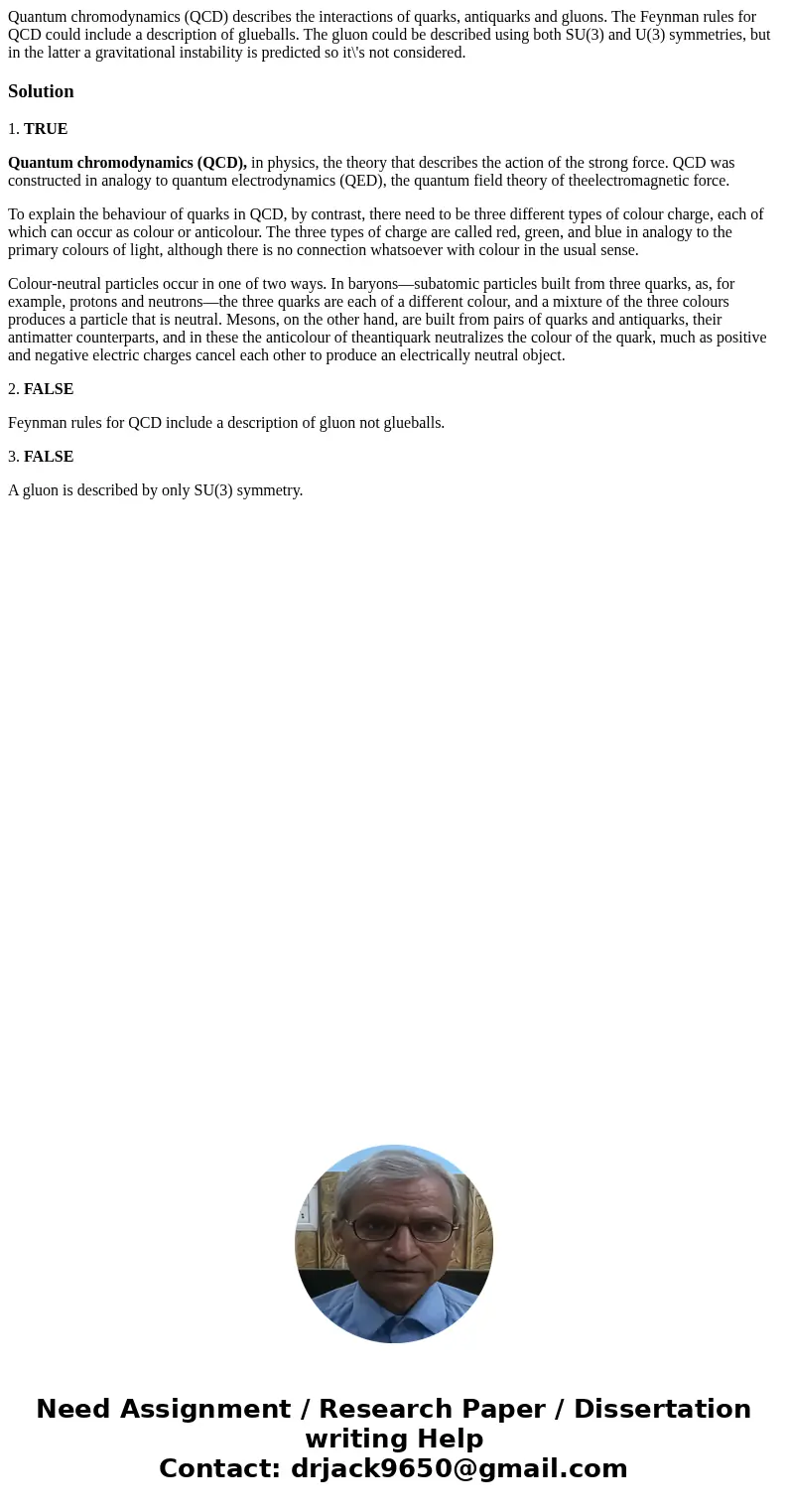Quantum chromodynamics QCD describes the interactions of qua
Solution
1. TRUE
Quantum chromodynamics (QCD), in physics, the theory that describes the action of the strong force. QCD was constructed in analogy to quantum electrodynamics (QED), the quantum field theory of theelectromagnetic force.
To explain the behaviour of quarks in QCD, by contrast, there need to be three different types of colour charge, each of which can occur as colour or anticolour. The three types of charge are called red, green, and blue in analogy to the primary colours of light, although there is no connection whatsoever with colour in the usual sense.
Colour-neutral particles occur in one of two ways. In baryons—subatomic particles built from three quarks, as, for example, protons and neutrons—the three quarks are each of a different colour, and a mixture of the three colours produces a particle that is neutral. Mesons, on the other hand, are built from pairs of quarks and antiquarks, their antimatter counterparts, and in these the anticolour of theantiquark neutralizes the colour of the quark, much as positive and negative electric charges cancel each other to produce an electrically neutral object.
2. FALSE
Feynman rules for QCD include a description of gluon not glueballs.
3. FALSE
A gluon is described by only SU(3) symmetry.

 Homework Sourse
Homework Sourse